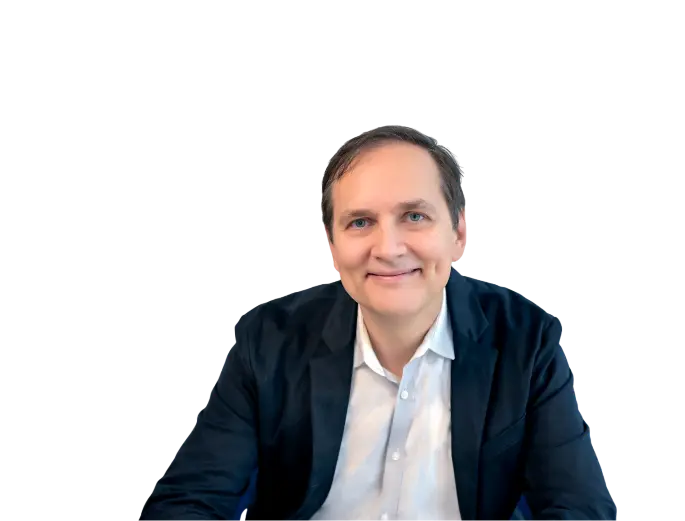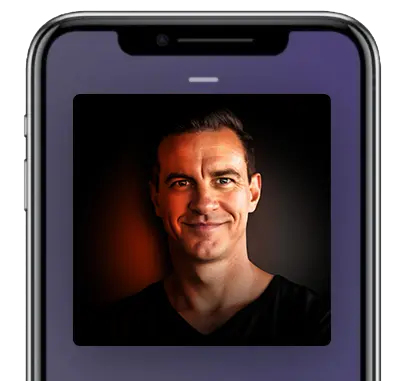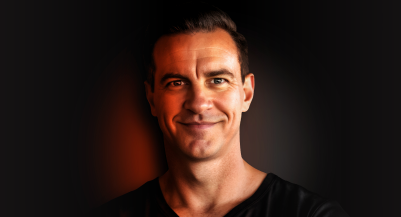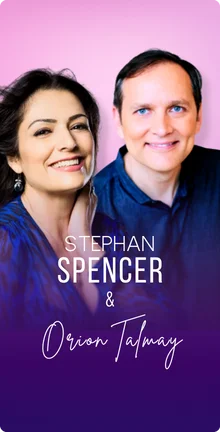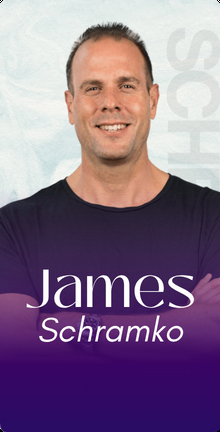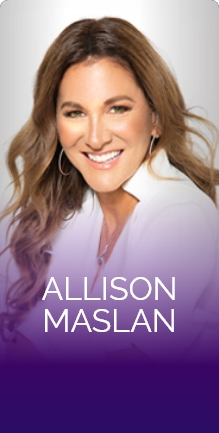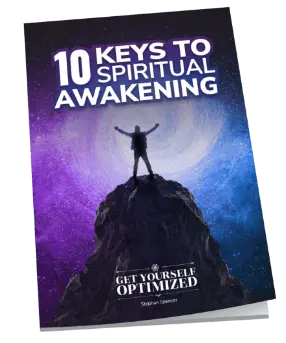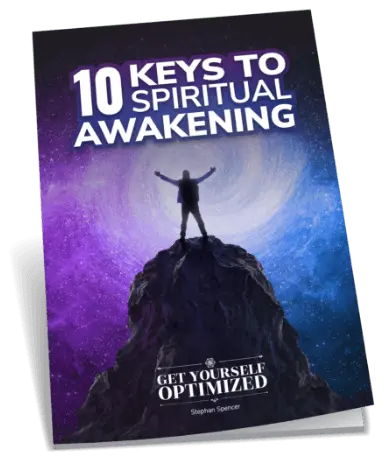In this Episode
- [04:41]Greg Merrilees details the impact of hiring James Schramko as his business coach and the subsequent growth of his business.
- [10:34]Greg highlights the importance of living with intention and the lessons learned from Stephan.
- [28:32]Greg emphasizes the importance of using AI to enhance creativity and productivity within his team.
- [33:13]Greg explains the process of using AI to create high-quality images and content for clients.
- [44:13]Greg and Stephan discuss the benefits of using AI for ongoing optimization and maintenance of websites.
- [49:07]Greg shares how AI has helped them deliver better results for their clients and improve their business model.
- [57:21]Greg elaborates on the importance of seeking out mentors and coaches for personal and business growth.
Greg, it’s so great to have you on the show.
We’re going to optimize me. That’s what we’ve been doing for the last 10 years, isn’t it, Stephan?
Thank you for agreeing to be a case study episode on Get Yourself Optimized. We did some great case studies on Marketing Speak of shared clients, about a half dozen of them already. Those have been really fun and insightful for our listeners and viewers.
Now we’re going to do a case study on you because I’ve been coaching you a bit, and you’ve made some progress, some improvements in your life and in your business. We want to share it with the audience here and help them to grow their business and improve their life, optimize themselves and their relationships and everything else. Thanks for being here.
Absolutely. This is going to be fun and interesting because I’ve never done this type of podcast before. I’ve listened to all of your podcasts on GYO and Marketing Speak. You have a knack for drawing out an interesting conversation that’s helpful to the listener and viewer. That’s the goal of this episode.
My secret to that is just letting go and letting God. I don’t really prep. I just tune in, and I trust that I’m getting guided to the questions that I’m meant to ask. Let’s first start with your origin story or superhero origin story. How did you break into this amazing business, design, and creative work that you run this wonderful agency?
I’ve referred a number of clients to you over the years. We’ve worked together on many projects that are my own projects and my wife’s projects, as well as client projects that we’ve shared awesome outcomes with.
I wanted to start with that origin story, and I think we also want to make sure we cover how you did this really clever thing, getting noticed by James Schramko and Ezra Firestone, and that really broke you into a whole new level in business. Let’s start there.
To back up a little bit before that. I started my business in the year 2000, and then I had to pivot in the year 2012, but I’ll get to that bit sure. That was the breakthrough moment that you’re talking about.
The fastest path to success isn't working harder; it's finding someone who's already walked the path and asking them to show you the way. Share on XBut the reason I started my business in the year 2000 was because I was working for an employer in a t-shirt printing company as one of the graphic designers there, and I was working for this awesome guy who was my first mentor in life. He had an aneurysm and died suddenly. He had a family, two lovely daughters, and was a really good friend/mentor to me. It was really devastating for me as well.
Anyway, I took a month off work. I didn’t know what to do at that point. It was really just working for him, his wife, and his family. We did work in this screen printing company and factory for probably the first eight years. Then, he deleted that side of the business, and we just did design. It was happening to the talents that I had talent as well. It was mainly promoting my design skills.
When he died, I didn’t know what to do. After a month, two of his clients reached out to me and said they wanted me to work for them, but neither of them could make a decision. I just said to both of them, “Look, if I start my own business, will you give me work?” One said yes. Then the other one said yes as well.
That was the start, in the year 2000. When I started my design business, we designed t-shirts and got into a pivotal moment in Australia and around the world, specifically in the clothing industry. We went vertical, which means the retailers squeezed out the wholesalers, and all of our clients were the wholesalers.
All of a sudden, we had no clients, and we had a young family. We had a mortgage. We had six full-time designers in the office. We had local clients. We went directly to the retailers, but they wanted us to know that their payment terms were that we designed for them, and then we would wait 60 to 90 days to get paid. Cash flow was terrible and just didn’t work. That’s when this pivot moment happened. That’s when I thought I needed to reinvent my business.

I had borrowed over a hundred thousand dollars, and I was in debt just to try and stay afloat and feed the team, essentially, and my family. What happened was I found podcasts, and I found this one with Ezra Firestone and James Schramko, called Think Act Get. It’s no longer around now, but they just delivered so much value on this podcast that I thought I just needed to reach out to them to say thanks, because on their podcast, they mentioned that they didn’t like their logo.
At that point, I was going to reach out anyway to say thanks, but I decided to send them a new logo design just randomly. Nothing’s random. I sent them that logo. Ezra replied that he didn’t like it, and said, “Yeah, we’re fine. Thanks.”
Then I thought, I can either do two things. I can just let it go, or I could say, “No, I’m going to try again.” I tried again. This time I thought about, ‘What’s my history?’ I’m a t-shirt designer. This time, I designed them a logo that would look cool on a t-shirt instead of just doing a logo that I thought they might want. I just sort of tapped into what I thought would be a cool design to wear.
Ezra is a pretty cool guy from New York. He grew up in Hawaii. He’s kind of got a little bit of a hippie vibe, and then he sent me an email back that said, “Hot dang, this makes us look like a fancy softball team.”
I’m just guessing he has an American accent, and he absolutely loved it. Then we jumped on a call, and I started building a relationship with him. Then, I hired James Schramko as my business coach back then as well. The way that the story unfolded was that he came to my office, where I had a boardroom, and we had the designers sitting out in the sort of design area.
We just went into the boardroom, and he said, “Why do you have this office? Why do you have these full-time Australian designers?” We’ve got local clients, and I explained the whole business situation. At that time, I think it was about 70 employees who worked for him offshore. He said, “What if I could show you a better way to reinvent your entire business?”
I said, “Great. Where do I sign up?” And that’s when I joined his coaching program, which was literally 12 years ago. He was my business coach for a while, but on that journey, he said to me, “This idea of doing the free t-shirt design for us works so well. Why don’t you do that to other clients or other prospects as well?” I listened to a lot of different podcasts, and I reached out to all the podcast hosts.
I did the same thing. I designed them a free t-shirt, but I didn’t just put their logo on a t-shirt. I made it look cool and kind of used a slogan of theirs. Listening to their podcasts and reading their testimonials. For instance, Clay Collins from LeadPages said a lot of things, like “LeadPages is my secret weapon.” We just did this really cool secret weapon design, and instead of slapping a logo, we got a little bit creative.
My mentors come into my life at the right time; it’s always for a reason.
All these Influencers and podcasters loved our design, and then our name started spreading, and we designed for Ezra and all of his clients and then James Schramko and all of his clients, and our name just spread. That was the ‘aha’ moment of doing that t-shirt design.
You say nothing’s random, and we’ve talked about this. Was this like a divine conspiracy that was a total setup in your favor of having those two people come into your life and help you build your business?
Absolutely. It’s interesting, Stephan, you came into my life because at that point, I think it was probably four or five years after I met James Schramko. It might’ve been even earlier, but it was through somebody else that we met, mutually through James Schramko, Taki Moore, and you were in his coaching program. I designed for Taki and all of his clients. I think he did the intro. I’m not sure exactly, but I’ve always sought out mentors, somehow.
I don’t know how, but my whole life, like the first one, was Ian, my boss, who had an aneurysm. When he died, I found James Schramko, and I found you. I just keep finding all of these mentors in my life at the right time.
My first boss was 10 years ago. James Schramko was my coach for 10 years. We’ve been friends, and you’ve been helping me on all these weekly calls, and I help you a little bit here and there as well. It’s kind of mutual, but at the same time, it’s more about opening my mind to a new way of thinking. I’ve watched you, Stephan, go through an amazing change from when we first met. It’s been incredible.
I’ve been listening to your podcasts over that journey, and asking you questions about them on our calls, seeing how it’s changed your life for the better. It’s reflected heavily on the way I think about things. You often will on these calls, just question what I’m saying and make me really think about it, which is super powerful to question everything.
What’s an example?
Let’s just think about this. Just a tangible example—I had no idea about crypto or Bitcoin. This has gone back maybe six years, when you introduced it to me. I took your advice and invested some and held onto it. That’s doing really well. This is just tangible advice that has worked out quite well in my favor. I feel like these mentors, you and everybody that comes into my life at the right time, it’s always for a reason.
It’s not just about making more money, but it’s also about taking me out of my comfort zone and starting to think about things in a different way. One of the main messages I think you said to me was live with intention, and I think I heard that on your podcast. We had a big discussion about it once. That’s the way I think about everything, and it does make a difference in my life.
I’m a big believer that what you put into life is what you get out. It reinforces the statement that everything happens for a reason. If you don’t put in a good effort, it may not be immediately apparent, but things will eventually come around.
I’m always quite intentional about absolutely everything that I do, even down to language. I remember the lesson you taught me once when I said to you, “I only hear from this person when he wants something. It’s like he just wants to use me for something like that.” And then what did you say to me, Stephan? Do you remember?
I don’t know.
It was something along the lines of—I caught him as a user—and you said, “Alright, let’s sort of unpack this. Why do you think he’s a user?”
I said, “He just reaches out when he wants something.” You were saying how you shouldn’t really talk. You shouldn’t really slander anybody behind their back. I was thinking about it, and I was thinking that the initial thoughts were, ‘He’ll never know.’ But then what are your thoughts on that step?
Whenever you talk badly about somebody, you’re actually sending negative energy their way. It’s like shooting these kinds of ‘spiritual spears’ at them. It’s called ‘evil speech.’ You may not have an intention to hurt the person, but even if you’re just saying it out loud to yourself, words are powerful. Words are magic—they manifest reality.
It’s the first form of manifestation. You have a thought, and it becomes a thing. What’s the first thing that is created? Unless you’re at a drawing tablet or at a computer typing, it’s the words coming out of your mouth. Those words are vibrations. They are traveling on sound waves. You’ve turned a thought into a thing if that thing that you’re creating is not really of the light because you’re talking badly about somebody.
Even if it’s true, especially if it’s true. ‘Evil speech’ is usually true, whereas saying something that is, let’s say, slanderous, could be something false. But in this case, it was true information you were sharing, but it was not in the light. I kind of challenged you on that.
You took that advice and that perspective on board, and you made significant changes in how you started seeing this person and talking about them. I think your relationship with this person changed, if I’m correct.
Absolutely. It’s quite incredible how these things happen. At that point, he reached out because he wanted to refer somebody to me, which is really cool. But that relationship has been going on ever since. It’s just amazing how it’s just a different shift in thinking.
Just coming back to one of your other points, you always say that ‘everything happens for a reason.’ It kind of leads into that. Just us having that conversation made me think about it differently, and then it led to other things. Everything does happen for a reason—I’m a big believer in that. I’m a big believer that what you put into life is what you get out. It reinforces the statement that everything happens for a reason. If you don’t put in a good effort, then it’s not going to be immediately apparent, but things come around eventually.

Another way to frame it that I quite like, and I learned this from the book, The Four Agreements, Don Miguel Ruiz. One of the four agreements is to be impeccable with your word. The converse of that is to perhaps be slanderous or gossiping, which is another way of saying ‘evil speech’.
If you’re gossiping about somebody, the author, Don Miguel Ruiz, refers to it as ‘black magic’. You are casting a powerful negative spell. You are using ‘black magic’ when you gossip about somebody. I thought that was really a profound statement, and it’s another really great, powerful way to frame it.
I couldn’t agree more. Another thing you taught me, which came from Orion, was that the bow is on the bottom.
Yes, you have a gift sometimes, but you don’t recognize it as a gift because the bow is at the bottom.
All these lessons that we’ve just mentioned are kind of framing the way I think about everything. I think about it sometimes, and I get frustrated as a business owner. A lot of us are kind of perfectionists; you expect your whole team to be thinking on a level that you’re thinking, but they’re just there to do a job, and they want to do it really well, but they’re never going to think like a business owner.
When I ‘reframe’ my thinking towards that, the bows are always on the bottom. ‘Don’t get frustrated. This is me.’ I don’t get frustrated with them. Sometimes I’ll record a Loom video with some feedback, and then I’ll think it didn’t feel right. I’ll rerecord it and think of all these positive thoughts before, and how the bow is on the bottom. I am lucky to have a team and this member, especially, and it just ‘reframes’ the way you think, and they deliver a totally different outcome with the message. Things like that are just super valuable lessons.
Really powerful. If you find yourself being critical, and let’s say it’s an alum video or in a Zoom call recording that’s going to go to your team, you’ll re-record that in a way that is more positive and framed in a more constructive way.
Always think about the outcome.
Exactly. Always think about the outcome, without saying you did this wrong or that. I now want to help educate them on how to think about getting an outcome as a foe, as opposed to just focusing on the thing or the task. It’s a real shift in the way I deliver a message now, and it works, and it feels good as well.
I find myself rerecording Looms as well, sometimes because I felt like it was not the right energy. I was not giving a ‘criticism sandwich’ where I would give positive feedback and then constructive feedback that was not all positive, and then something positive at the end, and then I would rerecord it.
Absolutely, I’m just trying to think of other things that have been important for me that you’ve taught me on this journey, and for the listener, these things just come out of our conversations. The reason Stephan and I have a call most weeks is because we have a lot of clients, and we talk about how we’re helping them from Stephan’s SEO team and my design team, and the goal is to get them the best outcome possible.
But these conversations have turned from just a business relationship into a friendship over many years now, it’s probably close to a decade we’ve been having these calls, which is just amazing. I absolutely love it. I get so much value and enjoyment out of the calls, but you introduced me to this idea of angel numbers. I don’t know how that came across. It might’ve been a podcast once again, and we sort of discussed it.
But it’s interesting. The number 333 keeps popping up in my life. Just randomly, you might see the time of the day, or you just see it on the building, or you’ll see it somewhere, the price of something, whatever it is. It’s just incredible how it keeps popping up. I had no understanding of what this all meant until you introduced what this actually means. It’s an angel number, and all these different numbers have different meanings. On one of our calls, we went through a whole range of numbers and what they meant. Do you want to unpack that more? You could articulate it better than that.
I think of it like this. If you are the main character in a movie, and let’s say you’re Truman in The Truman Show, and the other actors want to get a message to you, or the director or someone off-screen, they might make a small adjustment in the scene.
They might put a repeating number sequence on the clock. They might drop a note on the floor that you’ll hopefully notice and pick up and read. These are ways that our guides and our angels, our soul family, are getting messages to us. Of course, God is orchestrating all of this. God is delivering messages to you; sometimes it’s a really obvious one, it’s a ‘do-or-die moment’ essentially, and you’re hearing the message.
I remember interviewing Andre Norman, and I talked about this. I actually knew this from before because we’re friends who were both in Genius Network, and he’s got an incredible story. He spent some time in prison, and he was not somebody you would ever mess with because you’d get stabbed.
He was messed with by I don’t know how many other inmates. He fought back, and he had a shank or whatever. He was injured. Never killed anybody. But he got very close in this particular instant, and he heard a voice, it was the voice of God in his head saying, “This is the line, don’t cross it.” And he didn’t. Now he’s out. Of course, he’s got a new, incredible life that he’d built. A great story.
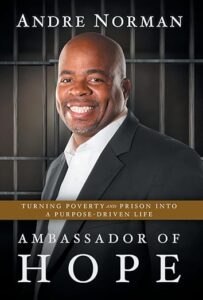
I highly recommend listening to that episode. Andre Norman is the author of the book, Ambassador of Hope. It’s sometimes a big kind of burning bush moment for some people, but it’s oftentimes mostly, I’d say, for people, a still small voice, a very subtle nudge or kind of wink from the universe, from the creator that is meant to be actioned on, but it’s not in your face. It’s not super obvious. It’s easy to ignore.
When you get an angel number repeatedly, it’s not just a hello. It’s not just that, “We’re here. We’re watching out for you.” There’s a meaning to it. There is something to unpack. There’s a secret message in there. If you rely on and trust the guidance that you get, you pull up, let’s say, Google and start searching for 333 angel number meaning, and you just feel like you’re guided to wherever you’re guided.
Let’s say it’s search result number three, or it’s the AI overview answer, or it’s an image result, and you click on the fifth one in the second row or whatever, because it just grabs your eye. That is your guidance directing you to the meaning that you’re meant to unpack.
Yeah, and nothing happens randomly. Like ever. It’s amazing.
There’s absolutely nothing random. If you think about this as a movie set and you’re the main character, if you’re in the bedroom in the scene and there’s a side table with a table lamp and a book, that book wasn’t randomly placed there. Somebody placed it. I don’t know, a piece of lint on the table was also placed there. It didn’t show up randomly. It’s there very intentionally. Everything is a very well-orchestrated and precision-designed movie set.
The number 333, when I looked it up, symbolizes alignment, encouragement and divine protection. It just makes you feel protected. It’s like, ‘Don’t worry about it.’ You got this type of message. It’s not just me, it’s my whole family. My wife, my daughter, and my mother-in-law they’ve all had this 333 popping up again and again. When my daughter turned 18 recently, my wife, my daughter, and her mom all got a tiny little 333 tattooed on the back of their neck. Just to remind everybody that it’s a special number. It’s pretty cool. It’s very significant for us.

What’s the significance for your wife?
Well, it’s similar. I have to probably ask her to specifically say what it means to her, but just knowing that it always pops up for her. In fact, her grandmother always used to say—she passed away about six, seven years ago now—“It will all always work out in the end.”
It’s kind of like her Nana is showing up, saying, “Don’t worry about it. You got this. It’ll all work out in the end.”
Yeah, everything always does.
It’s amazing and special. It makes you feel good when you see the 333 on the back of the neck. It’s cool. But it just reminds me as well of another thing you say, “We’re all one.” You think about everything, and whether that’s spiritually unconsciously, we’re all united in one way, physically, we’re all made from stars.
I often think if I wake up in the middle of the night, thinking about work or whatever. The way I take my mind off it is to put on a deep space documentary, and I slow the audio right down to like 0.7, and it just reminds me that we’re all one. It’s just very relaxing, and I fall asleep just like that because it just puts my mind at ease and makes me feel peaceful.
What are some of the ways that you notice that we’re all one? Do you think of somebody, and then they call out of the blue? Do you get synchronicities or strange coincidences happening that are kind of outside the norm?
Being impeccable with your word isn’t just about honesty; it’s about avoiding gossip and negative speech, which is really black magic. Share on XI can’t think of anything off the top of my head, but it has happened frequently throughout my life. Absolutely. I just can’t think of one right now, sorry. I don’t have a better answer.
Just as an example, to my oldest daughter, you designed her website, which is amazing, chloespencer.com. She had multiple people that she reached out to over the years to see how they’re doing. They’re like, “I was just thinking about you.” We’re actually in need of SEO services or whatever; that’s happened multiple times. It wasn’t like just a recent thing. It was like 10 years had gone by, and then she reached out to check in because this feels like.
You’ve just triggered a thought. Sorry for stepping over you there, but yes, after thinking about it, this happens to me quite frequently. I will dream about somebody, and the very next day, they’ll be in my life for some reason. I may not have had contact with them for a week, a month, a year, or longer. That happens a lot.
That’s cool. What kind of context is it like, a nudge to maybe contact this person to maybe do a deal with them, like some sort of business relationship, or you just think about them and then they show up, like in a phone call or somehow in person or something?
Exactly. Normally, a phone call. It’s not like I don’t wake up thinking about them. When that person calls, it just instantly triggers. I had a dream about that person last night. It’s incredible how it’s just happened so many times.
Yeah, really cool. It’s like in The Matrix. The glitch in The Matrix where the cat is just going across the room twice. It’s like, ‘Wait a second, that cat did the same movements.’ Let’s talk about AI because that’s a big feature in the news, in people’s lives and businesses. There’s a lot of fear, uncertainty and doubt around AI.
Will it take all our jobs and our businesses and all that? We’ve talked a lot about AI, we’ve used AI, and AI is a core part of your business now. You use it in many different ways. Let’s talk about how this has transformed your business.
It was about two and a half years ago. We’re on one of these calls that we often have. We had this very same conversation, and we’re thinking, “Okay, it could be great. It could be scary. Everybody’s going to lose their jobs, etc.” And you said to me, “I think you should just use AI every single day. Don’t get your team to do it. Don’t outsource it. You do it and just see what it can lead to.”
Two and a half years later, thereabouts. We do use it in our business every day. I don’t see it as a threat. We empower every one of our team members to use AI to help them with their roles. We use it to generate not so much designs, but images for our clients. We use it for copyright, and we use it to generate a lot of the creative, with a lot of guidance, but for our clients’ websites.
It’s really transformed the way we deliver websites these days to make it more enjoyable for our team. They don’t have to do all the grand work. The AI will do all of the stuff that they don’t want to do. Then they still get to put their creativity on top of it. I just think it’s incredible. I love it. It came from our very first conversation, saying, “Use it every day.”
A great example use case is instead of providing mockups, design mockups of a homepage with lorem ipsum placeholder copy, you will use or your team will use ChatGPT to create some really good copy. It’s actually amazing. No copywriter was involved. You’re not saying we’re doing copywriting for you.

This is just lorem ipsum 2.0. It really gets people in a frame of mind, like, I see the vision for this website instead of getting stuck on this copy that’s not real. They see something that looks real and legit and on brand and on message. Maybe it’s a bit off, but it’s not really off. They’re like, “Wow, this is great.” They get to an outcome faster and more efficiently. This is something that you’ve been doing for quite a while now, many months.
It started by just uploading the design questionnaire, and then it turned into uploading the call transcription. Then I uploaded my entire book, Next Level Website Design, and then we uploaded copyright in frameworks, and it’s just evolved over time. So it keeps getting better and better. That’s the thing with AI; unless you start using it, you’ll never know how much it can evolve. Just triggers new ideas.
‘What if we do this? What if we do that?’ It’s the same with images as well. For a lot of the clients that you’ve sent our way, we’ve done an AI photo shoot. One of the clients in particular said, “How much did he pay for a photo shoot before we did the AI photo shoot?” There were a few thousand.
Suppose we’re talking about the person who just launched their personal brand website. I think it was over a thousand bucks for a photo shoot with somebody locally here in the city. They weren’t very good. I gave him that feedback. We sent them over to you anyway, and you’re like, “Well, we can do better with an AI photo shoot.” I think you charged $60 or something like that. It was incredible. They looked so good. Now, all of those photos on his website are AI-generated instead of from that photo shoot.
His comment was, “It’s just so uncanny. These look better than my professional photo shoot, and I wasn’t even there.” It saved him a lot of pain in time. AI is incredible. I don’t see it as a threat. If you use it, you’ll just see opportunity.
There’s a lot of mastery to be gained in the continual use and upskilling. If you’re just putting in basic prompts, just a handful of words, don’t expect some genius thing out of the tool. Invest the time and energy in finessing or fining the prompt, and you’ve done that really well. You use multiple tools for these AI photo shoots. You do a lot of prompt engineering to come up with a very high-quality set of images.
AI is incredible. If you use it, you’ll see opportunity.
Do you want to give an example of the before and after of what would be a prompt that’s not good versus a prompt that is refined?
Absolutely. Use AI to help you generate a prompt. This is how we do it. We used to, the bad way of where it didn’t work very well was just saying, “I want this client,” and you give them a name, that’s the model name, “doing this, wearing that.” You kind of go into a little bit of detail, but you’re kind of guessing the way to get the outcome that you want. It’ll generate a few different options.
By the way, you can use Midjourney, you can use Canva. There’s a really good tool in Canva called Headshots. It’s an app plugin thing. There are a whole bunch of Headshot AI generators out there that you can Google, and you’ll see half a dozen that are all really good these days. They all cost about maybe, I think it’s a hundred credits for like $40 or something like that. They’re all similarly priced.
The bad way is just given a little prompt, but the good way is scouring the internet, especially Pinterest, which has some amazing photos on there, and it could be famous people. It could be any genre you’re looking for, any type of photo, and then take that photo and upload it; it could even be a ChatGPT-generated image.
Claude’s pretty good as well. You upload it, and you ask to generate the prompt based on that photo. Then you tweak the prompt to be more specific to your client and your client’s business model and whatever else is needed. You’re using a bit of your own custom prompt amongst the result prompts that you generated from the Pinterest image. You combine them, and the results are just next level. They’re so good.
This is a really critical concept. When you use the AI to generate a much more finessed prompt, you will get better output. You don’t have to try to crack your brain, figure it all out on your own. You can use the AI as a conversation partner and say, “This is what I’m trying to achieve.”

You can even open a separate canvas and finesse it in that canvas directly. Then ask ChatGPT or the LLM in question. “Now give me the prompt that I should have used from the beginning that would have gotten me this amazing finessed version of output, or prompt or whatever, so that I can get straight to that next time.” That becomes what’s called a system prompt.
Another way to think about it is if you’re working on something you’ve created through this conversation process, either typing or talking to the AI. Now you have a really dialed-in whatever marketing plan or document or something. You could do the system prompt thing as well, like I described, where you ask it to give the prompt that would produce this in the first attempt. But you could also ask if you’re doing some finessing of, let’s say, some business processes or whatever, you can say, “Now I want an SOP. Create the SOP for my business that gets me this outcome.”
If I like this particular style of email campaign or writing of marketing copy or whatever, “What’s the standard operating procedure that my team would use, like a checklist, to make sure that they dial in this quickly and get the kind of quality that I’m expecting?”
Incredible. That’s it, Stephan. You do think about how to get better prompts and get a better outcome, essentially with better prompts. You’ve taught us a lot of prompts, in general. You gave us an example of how Alex Hormozi did his recent book launch, and he said it was $105 million for a book launch.
I don’t see AI as a threat. We empower every one of our team members to utilize AI to support their roles.
He said, “What can we learn from that?” You put a prompt in and said, “Let’s relate that back to me and launch my book. What can I do to take some ideas from Alex Hormozi’s book launch?” Just thinking creatively and thinking in ways that you wouldn’t really think about if you didn’t have AI. Doing that just gave us some really good tips on what I could be doing for my book launch, and context is everything.
If you, along with the prompt, upload documents, or you give it additional URLs to help direct it. For example, with the Alex Hormozi book launch, I provided the live stream recording. It was a YouTube URL. Guy’s a beast. He’s relentless. I also fed it some commentaries from some also well-respected marketers who were kind of doing a reverse engineering of his launch campaign.
I gave him a behind-the-scenes video link, a YouTube link to him talking on his private jet. If you’re watching this video, that means that I hit my goal of selling a hundred million dollars’ worth of books and broke a world record, and he did.
I fed all that to ChatGPT and put it in deep research mode, then assembled the prompt, which generated some amazing ideas. This is something that anybody can do. If you’re feeling reticent about it, then you need to get in there and do the reps, like spend 15 minutes every day in ChatGPT trying different things and watch some YouTube videos that teach you some tricks.
If you’re not talking to ChatGPT, start talking to it. Use the ChatGPT app and go into voice mode, and start having a conversation with it. It gives you ideas for a birthday party, a surprise weekend getaway, or a gift for your loved one, or whatever you need.
The thing with AI is that, unless you start using it, you’ll never know how much it can evolve; it just triggers new ideas.
This is a collaborative partner that is in your pocket 24/7, and you could be driving, you could be going on a walk, you could be anywhere, and it’s available to you. You don’t have to be sitting at your computer typing on it.
A lot of people rely on it too much, and studies are saying that people are becoming less smart because of it.
Use it or lose it. If you don’t work your muscles, you’re going to atrophy. People are getting lazy and cognitively lazy in how they’re using AI constantly.
If you think about how you can do things that you didn’t do before, and don’t just use it to replace the things you did before, then you’re going to be more productive, more creative. That’s where I think about it—but also thinking as well, without AI, like you’ve taught me a lot of things and just using your own brain, not AI-based, on your experience.
We always have these conversations and challenges that we discuss, and I remember once you sent my book, my very first book draft, to Jay Abraham, to get some feedback. It’s so good having these amazing connections through you.
I wanted to get more than just feedback. I tried to obtain a testimonial quote, also known as an endorsement quote. Actually, that’s right. I was asking him to write the forward.
Which is incredible, considering he doesn’t even know me, but he actually took the effort to read the book. He gave some really solid feedback and basically said, “It feels like blog posts strung together, not enough story narrative going through it, kind of needs to be redone.” Things like that just.
I politely decline to give you a forward yes.
But how good, the bows on the bottom, everything happens for a reason. All these lessons we’ve just talked through. It made me just put it on pause for a bit at that time. It was in Melbourne, the most locked-down city, during the COVID times. We were super busy because everybody wanted to improve their online presence, and all that. So we were very busy at that time. I parked the idea for the book for a while.
Then I started using AI, and after playing with Claude, Gemini, ChatGPT, and Grok, I realized that Claude is actually the best. They’re all good at different things. But Claude was really good at helping me just rephrase some sentences and paragraphs in the book. It’s still all my stories and content, but using AI just to help rephrase things really made a world of difference.
It was about a year ago that I picked up that based on Jay Abraham’s feedback and your feedback. Then I rewrote the entire book, and I recently finished it, and the results are significantly better. I’ve had really good feedback from a lot of people.
Yeah, it’s a much better book. Kudos to you for taking the feedback on board and not letting it get you down, but actually using it in a constructive way, because that’s the way it was meant. I’m sure Jay was constructive feedback, not like tear you down and make you feel bad and give up on the book.
Yeah, not at all. It did the opposite. I was grateful because it’s 10 times better than it would have been back then. All these things, I’m super grateful for, and everything happens for a reason.
Let’s talk about ‘scale engine’ because that’s another one that came out of AI and our work together.
What was the first thing that you prompted? Is it from Orion originally?
It actually was from Orion. Orion did the prompting. She was trying to get some strategic advice from ChatGPT on how I can reposition my SEO agency and consulting services to be very AI-focused. Even though Google is still the vast majority of organic traffic, the percentage is like it’s a tiny, tiny fraction of traffic that comes from ChatGPT and Claude and so forth in comparison to Google. That said, everybody’s talking about AI and SEO and how the old SEO no longer works.
She was prompting ChatGPT, like, “How do I reposition the brand, the website and everything to be much more future-focused and AI, LLM focused as far as search everywhere optimization?” She had to come up with all these amazing things like acronyms, the Netconcepts radar method, which we’re using now; that came from ChatGPT, that acronym and what it means and how that fits into our brand and our delivery and everything. I showed that to you to inspire you to prompt ChatGPT in your own way for your business. And you came up with a ‘scale engine’ out of that.
You can’t expect your team to think like business owners—they’re there to do their job well, not carry the same weight you do. Share on XWhich is another acronym. For us, it was more than just trying to find an acronym. The conversation that I got from you, and you doing that, practice with Orion using ChatGPT, what I got, “Okay. I need to position myself differently because I don’t want to be seen as antiquated in the eyes of a prospect.” I guess that’s what you were looking at as well for your brand positioning.
You can just put AI in your headline; that’s what most people are doing these days, but I figured I want to future-proof my whole business based on this thought process. I thought, “What are all the things we offer?” Its website design, its website build, and its conversion optimization. We start with an audit and all these things, and then ongoing support, because I wanted to get some trailing recurring income off the end of it, instead of just a one-time project.
Putting all that thought process into it and getting my team involved as well. Then, that’s how we came up with the ‘scale engine’, which is an acronym that combines all our services into one: S, for the strategic AI audit, and the deep dive call. But we have a look at their analytics, and we put Microsoft Clarity on their website and all those sorts of things. We’re really diving deep before we start the project.
By the way, for somebody who’s not familiar with Microsoft Clarity, do you want to say what that is and why someone should know about it?
It’s a tool that you put on the backend of your website that will record every visitor who lands on your website. It does video recordings of every visitor and a heat map based on their patterns. If people click on this button, it’ll show up in the heat map more than the other buttons, et cetera. AI built into it that’ll help generate a report of how people are using your website.
This is different from Google Analytics. It’s free, like Google Analytics is free, forever free. It’s not like a free trial period or anything. It’s forever free. It gives you different stuff than Google Analytics. It’s not complicated to install on your website. It’s as easy as Google Analytics to install it on your website.
Then you get these anonymized user sessions where you can see the videos where they’re scrolling and clicking and not clicking and so forth. You can learn a ton about how they’re interacting with your website from that. Most people, surprisingly, are still unfamiliar with Microsoft Clarity, which does this as a free tool, clarity.microsoft.com. You can have it installed in minutes, basically, and start collecting data about how your users are using your site.
Yeah, it really is an incredible tool. We’re using that, so we really just reorganized our entire offer into this ‘scale’ acronym.
What’s the rest of the ‘scale’? The strategic audit at the beginning.
It’s not just the order, but it’s like a whole strategy call to figure out how we’re going to redesign the website to get them the best result possible. Then, C is the conversion focus creative after we’ve completed the full audit, the deep dive call, and the entire strategy. Then we put the creative team to work, which is all of the creativity from the brand visuals. We start with the mood board and create a whole new look and feel for their website. And then, A is the AI-driven funnels and lead magnets.
We’re using AI these days to create a lot of different lead magnets from PDFs based on people’s pain points, but also what we’ve done recently using tools like Lovable and you all those sorts of AI vibe coding tools. We use it to create interactive lead magnets. We did one for a client where they entered their weight and height, and it calculated their daily macro input based on a macro calculator, providing recommendations like that. The client just loved that idea. We did one first-year analysis, which is like a revenue booster tool to see if they boosted their traffic, conversions, or average order value, and what that would mean to their revenue each month. It’s pretty cool.
AI-driven lead makers, then L is the launch after build. We build it, and then we just make sure it’s all perfect on whatever platform they choose out of WordPress, Mainly, Webflow or Shopify. Then, evergreen optimization is the E, and that is where we conduct the A/B split testing to determine how their websites perform. We introduce new ideas, new lead magnets, new copy, split tests, and whatever else is needed, basically. We also give them ongoing maintenance.
That’s all our services rolled into this scale acronym, which is quite impressive. That all came from our conversation, Stephan.
That’s awesome. This gives you recurring revenue. It’s not just a one-off project then. So it’s an ongoing monthly engagement, which is a real innovation on your business model and a real gift for you financially.
Exactly. The more you know, the clients we can look after for a longer time. They get a better result because those are constant. It’s like a racecar. That’s the analogy I use. It might be a really finely tuned car at the start, but to go through a whole season, you have to fine-tune it constantly. That’s what we do with the website over time, because we don’t know how every person will use a specific website in different niches. We designed for various niches.
That’s why the optimization and viewing heat maps, and our dedicated conversion optimizer will put a report together based on all her findings, the analytics, the heat maps and her recommendations. I love brainstorming with those ideas as well. Then we send it to the client, gather their thoughts, and implement and split-test ideas to see which one wins. Over time, we constantly try to improve everybody’s websites.
You’ve really improved what comes out of the design and development team at Studio1. It’s much better because of our work together, and you’ve dialed in some processes. You’re using some additional tools that I’ve instructed you guys about, like Screaming Frog, to crawl the site in the staging site before it gets launched to make sure you’re not leaving any Lorem ipsum type copy.
That’s not a thing anymore for you guys, of course, but you can scan for typos and grammar errors and broken links and overly large images and all that using Screaming Frog. That’s one of the things that you guys are doing now.
But on that topic, I’m also excited to mention that you have had your team train my team on how you guys do SEO for the technical side in the backend. Cause my developers are not SEO people. Don’t offer that, never want to, it seems way too much like a headache.
In the light of getting your clients and our clients the best results possible, your team has gone to the effort of teaching my team how to do that from an SEO perspective. I am very grateful for that. That once again came out of our calls, and realizing, ‘We’ve got a bit of a hiccup here and there, let’s get this right for the client.’ That’s your attitude. That’s the way we approach every problem. There are always challenges that we overcome with that attitude. Isn’t there Stephan on our calls?
Some things that we just riff back and forth, this is from a website angle. We can get more into the personal development side of it again, too. But let’s take, as an example, you’ve innovated, you’ve got the best in class about pages. So about me, or about us or about the company.
Versions of these pages feature great storytelling, complete with timelines, milestones, photos, illustrations, or a combination of each, which really helps the visitor follow the hero’s journey of the person, the company, or the founders. This is really important for building trust factors that allow people to do business with you and make them want to do business with you.
One thing that you’ve improved on from the other side of me giving you some suggestions was the way that you do podcast websites or podcast sections of websites. Do you want to talk about that?
Yeah, like an actual page or like a post page.
Like the episode pages, each episode page is pretty sophisticated and the way that you do the style of the index of the podcast, the top-level page with these cards.
This is more from you than from me. We brainstorm a lot of ideas, don’t we? You give ideas, I give ideas, and then we end up coming up with pages that it’s like, “Who came up with that?” That’s why I’m thinking right now of this one.
No, you’re right. I did come up with that. The inspiration we all stand on the shoulders of giants. I was inspired by Netflix and masterclass.com and how they positioned the courses and how Netflix positions these TV series as movie posters in a small form. It’s really compelling.
To click on it, you want to click on it. It looks much more contemporary. To do a podcast episode in that kind of movie format, movie poster type, small format like Netflix or MasterClass was something that I proposed to you. Now you guys are doing it across the board. Looks like a lot of different sites.
What’s made the biggest difference in my life is subconsciously seeking out mentors. That’s been the game-changer.
We do cause it looks so cool. It’s really just thinking about the preview image of each podcast, to make it feel more exciting, like a movie poster, but without being too creative, always thinking that it’s going to be a template that we need to hand off to a client. So it can’t be too creative.
You need them to be able to upload it to their Canva account as a template in layers so that they can change the text in the photo, but it still retains the same look. It’s just little things like that that make the difference and that come out of our calls.
To me, even that blog post, which was mainly your idea, but what we do for conversions and for usability, you might have all the content down the middle of the page, let’s say on desktop. Then on the left-hand side of the page, you’ll have a table of contents, which has an anchor link down the page. It makes it really easy for people to get to the bit that interests them, rather than scrolling through really long pages.
Then on the other side, we might have a sticky lead magnet call-to-action so that as you scroll, it stays static on the screen. It’s always in your face, ready for when people want to click on it. It stands out a lot more.
This idea of having a long-form blog post instead of a summary podcast episode page is one I got from a conversation with Mitch Russo many years ago. He was using a service called Podetize, and they did those kinds of pages and added images to break up the text. So it wasn’t just a long transcript. It looked like a blog post, even though it was the transcript.
I just took it to a whole other level, adding actionable takeaways, a downloadable checklist, and a recap of all the links, having the timestamps in the table of contents, and using the Simple Podcast Press plugin so that you could those timestamps that are in square brackets would automatically get turned into links.
When you click the link, it will play the audio player from that moment in the recording. All the way, I think this is a best-in-class podcast episode page, and we’re doing that across the board with our clients, with my two podcasts with Orion, my wife’s podcast, and so far, I haven’t seen any better podcast websites than ours.
I agree. They are next level. Absolutely. They rank well. I was on a call with a client a few months ago, and you had interviewed her on your podcast, and I Googled her name, and your website came up with that post, so that was right in front of her, which was hilarious. She’s a client of yours. She loved it.
Awesome. What else do we want to talk about here? What would be something that we can give our listener or viewer as an actionable takeaway? Something they can apply a lot of what we talked about, using AI and if they’re a podcaster, etc. And just thinking about how they approach life and business, and with intentionality and all that sort of stuff. But what pops in your mind as far as something you want to share?
Be vulnerable, look for mentors, and don’t do it alone.
Absolutely high level for me. What’s made the biggest difference in my life is subconsciously seeking out mentors. Like to me, that’s been the game changer. Don’t think you can do it all yourself. You’ll get a much better result in every aspect. If you rely on other people and are vulnerable, let people know, ‘I don’t know how to do this.’ I only went to school to year 11.
I was afraid to tell people that, but now I wear it. I’ve had my business for 25 years. I’d like to see someone say that after not going to school for year 12. So I’m quite proud of it now. Not that I recommend that to my daughter, but still. The point is to be vulnerable, look for mentors and don’t do it alone.
Mentors are different from coaches. You want to differentiate the two because there’s room for both. I’m a coach, I’m a consultant as well, and I don’t often mentor people because that means I’m kind of doing it for free, and I’ve got like more of an emotional tie to this person. I’m taking them under my wing. They’re not just a client. Could you elaborate a bit on that?
I use the word mentor as an umbrella brand because the first mentor in my life wasn’t a coach. It was just my boss helping me. I have just been stuck with that word. Since then, I’ve paid coaches a lot of money, but it’s been a good investment; I still consider them mentors. Realistically, a coach is someone whom you pay with the intention of them helping you in your life, business or whatever the case may be.
Awesome. If we want to send our listener or viewer somewhere to learn more from you, would it be your book website that we send them to? But if they want to, hire your agency, Studio1, and we can send them there. Let’s give them both URLs. While we’re at it, they’ve probably been listening now for the whole time. There’s enough rapport there. They may want to check out your own personal website, too. Let’s give them all three of those websites to go to.
Hopefully, the listeners got from this. Should hire Stephan as my coach because there’s so much that can come out of it. Gregmerrilees.com is my personal brand website. I don’t have much on there, but you can book a call with me there. It’s a paid call.
Then, nextlevelwebsitedesign.com, is where you’ll find the book, but on the book website, there’s a free resources tab. There is an interactive AI author, which is my entire book, along with some parameters uploaded to help you with your website. That’s all totally free. Just opt in there. Then, studio1design.com is an agency to help with your website design. We work in conjunction with Stephan’s team and netconcepts.com for SEO, which is search engine optimization, right, Stephan? Including AI.
That’s awesome. Well, Greg, this is a delight. Really value and appreciate our friendship and our business relationship, our partnership and collaboration across many shared clients and across various websites and internal projects of mine and my wife. Thank you so much.
Pleasure, thank you, Stephan. It’s a great journey. We’re only halfway.
All right. And thank you, listener. I hope that inspired you to go out and do something with this wisdom that you got over this episode, and not just take it as edutainment. Do it. Do the thing. We’ll catch you in the next episode. I’m your host, Stephan Spencer, signing off.
Important Links
Connect with Greg Merrilees
Apps and Tools
Books
Businesses/Organizations
Films
People
Previous Marketing Speak Episode
E-commerce Redesign Secrets: A Case Study with Greg Merrilees
High Converting Landing Pages with Greg Merrilees
How to Build a Digital Marketing Agency with Stephan Spencer and Greg Merrilees
Local Services Website Teardown: A Case Study with Greg Merrilees
Secrets to a Persuasive Website with Greg Merrilees
Previous Get Yourself Optimized Episode
YouTube Videos

